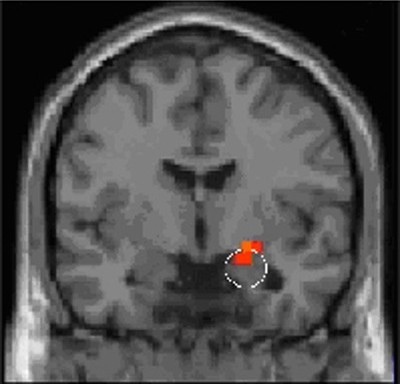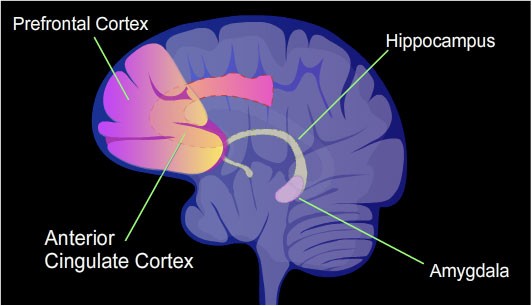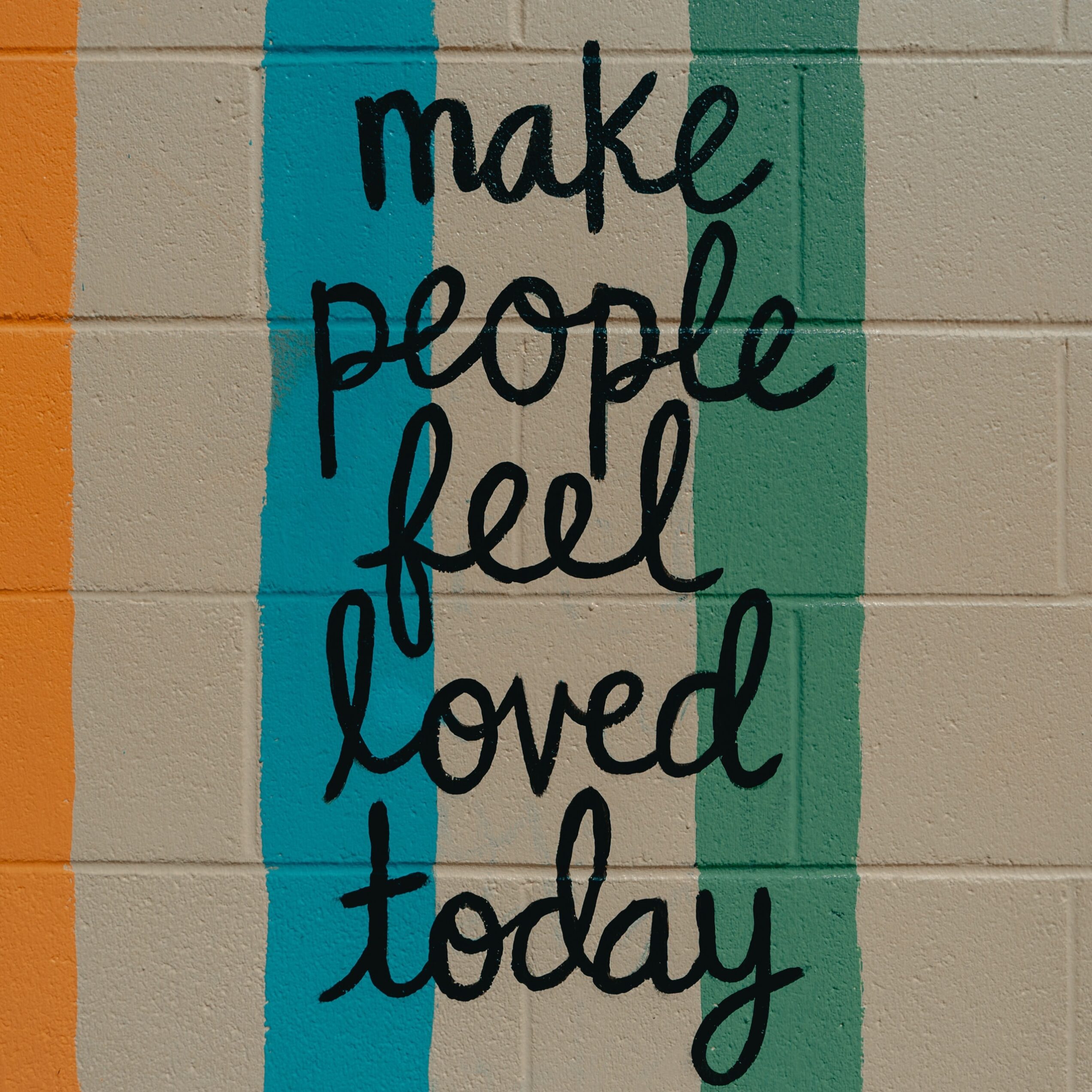
Brain-Based Toolkit for Navigating Uncertain Times
This Brain-Based Toolkit was created by Cat Kemmerling, Jessica Sharp, and Kristen Toohill—doctoral students in the William James College Leadership Psychology program. Their goal is to offer a neuroscience-informed resource to help leaders support themselves and others during the COVID-19 pandemic. In this time of immense disruption, providing stability, empathy, and compassion is critical to effective leadership. We hope you find these strategies useful! P.S. Did you know that Kristen Toohill is also Scott Crabtree’s co-author?
Knowledge: What is happening in your brain and body
Everyone is dealing with change, uncertainty, and stress. Regardless of how you are feeling, recognize that those feelings and reactions are completely normal. In times of uncertainty and change, there is no “normal” reaction—stress, sadness, anxiety, guilt, inability to make decisions, inability to focus, feeling of loss; all of these reactions are okay. Let’s break down what is happening in your brain.
 Negative emotions and fear tend to activate your amygdala. This is where fear lives in your brain; many of us know this as the flight, flight, or freeze part of our brain. When our amygdala is engaged, our levels of cortisol are increased. This is our stress hormone. Our cortisol goes into triage mode and sends blood to the necessary and critical parts of the body. It may mean increasing our levels of adrenaline to allow us to act quickly.
Negative emotions and fear tend to activate your amygdala. This is where fear lives in your brain; many of us know this as the flight, flight, or freeze part of our brain. When our amygdala is engaged, our levels of cortisol are increased. This is our stress hormone. Our cortisol goes into triage mode and sends blood to the necessary and critical parts of the body. It may mean increasing our levels of adrenaline to allow us to act quickly.
High levels of stress make it incredibly difficult for our brains to process information and be at its best. In addition, when the amygdala is overactivated, it is easy for us to become more irritable, less patient, and less likely to think about the feelings and emotions of others. Worry disrupts the brain bridge between our left and right hemispheres, which increases the amount of time necessary to make decisions and can increase confusion.
Many people are feeling grief and loss. Some are experiencing grief associated with losing or being away from loved ones, and some are experiencing grief associated with job loss. Everyone is grieving something right now, so we are in a state of collective grief.

When our levels of cortisol are too high for too long, though, our immune system can be compromised. When the amygdala becomes overactive, our prefrontal cortex is disengaged. Our prefrontal cortex is the part of our brain that is responsible for executive functioning, things like planning, organizing, and thinking into the future. Increased amygdala activity also increases our negative thoughts, negative self- talk, and decreases our positive thinking.
Brain-Based Coping Strategies
 New Routine
New Routine
Having a daily routine aids in providing certainty. This can help calm your brain at the start of the day and allow you to engage your prefrontal cortex quicker.
 Creating New Systems
Creating New Systems
Creating new systems and having daily goals also aids in providing certainty. This can decrease uncertainty and increase autonomy. Find systems that work for you—tools like to do lists, sticky notes, time blocking, or alarms to serve as reminders.
 Maintaining Social Connection
Maintaining Social Connection
We are hardwired for connection—our brains and bodies need to be in community with others. Being in isolation does not have to mean we are isolated from friends and family. Use technology to engage and connect with others.
 Limiting News Content
Limiting News Content
While for some, news content can help provide clarity and information, for some, it can increase stress and anxiety. Create boundaries around how much news you will take in.
 Empathy
Empathy
Empathy is the art of connecting with others and working to connect to their feelings. Theresa Wiseman, a nursing scholar, describes empathy as: perspective taking, staying out of judgment, recognizing emotions, then communicating those emotions to another.
 Name Your Feelings
Name Your Feelings
Naming your feelings is a tool that can engage the right ventrolateral prefrontal cortex. This is a part of the brain’s braking system which can also increase our ability to control our emotions. Putting feelings into words can unintentionally tap into this brain system. In addition, certain forms of mental training like meditative practice can improve the effectiveness of this system.
 Self-Care
Self-Care
Self-Care is about giving your body what it needs to be at its best. There are several best practices for self-care. These include meditation which increases the level of oxygen to your brain and decreases your amygdala activity. Physical activity can help clear out your brain, increase levels of endorphins, and help to improve your immune system. Finally, do not forget about sleep which is our body’s way to recharge.
Web-based Resources
TED Talk: How to Create Meaningful Connections While Apart
https://www.ted.com/talks/priya_parker_how_to_create_meaningful_connections_while_apart
Bullet Journaling 101 Video
https://youtu.be/ZK5VUuxGYr0 and https://youtu.be/d97P_daSzGY
Brene Brown’s Unlocking Us Podcast (Episode 4)
https://brenebrown.com/unlockingus/
Releasing Our Obsession with Productivity
https://youtu.be/eVwW6Jq3_TE
How to Release Perfectionism
https://youtu.be/OPa8NZ54WT8
Webinar from the NeuroLeadership Institute—What leaders should do during the COVID-19 crisis
https://hub.neuroleadership.com/coronavirus-leadership-mar2020-part3
Meditation Resources
https://buddhify.com/
References for the Brain-Based Toolkit
Ghadiri, A., Habermacher, A., & Peters, T. 2012.
Neuroleadership: a journey through the brain for business leaders.
Wiesbaden, Germany: Springer.
Lieberman, M. (2013). The brain’s braking system
(and how to “use your words” to tap into it).
Pillay, S. (2011). Your brain and business.
Upper Saddle River, NJ: FT Press.
Rock, D. & Ringleb, A. H. (Eds.), Handbook of
NeuroLeadership (pp. 205–214).
NeuroLeadership Institute.
Thank you to Cat, Jessica, and Kristen for this post! What other tools are in your toolkit? What strategies have been most helpful to you for coping and leading during the current pandemic? We’d love to hear your experiences & suggestions in the comments!
